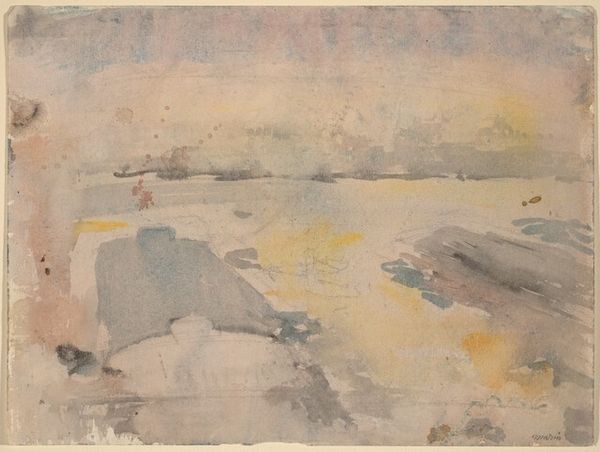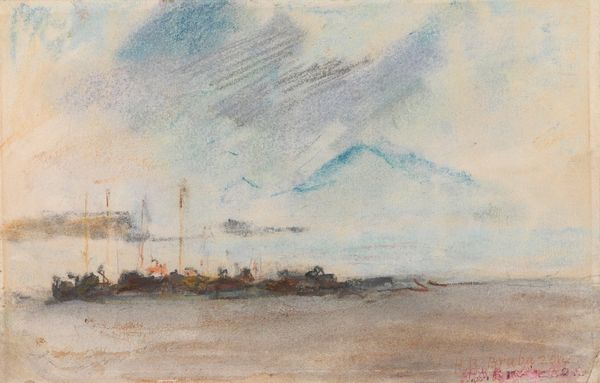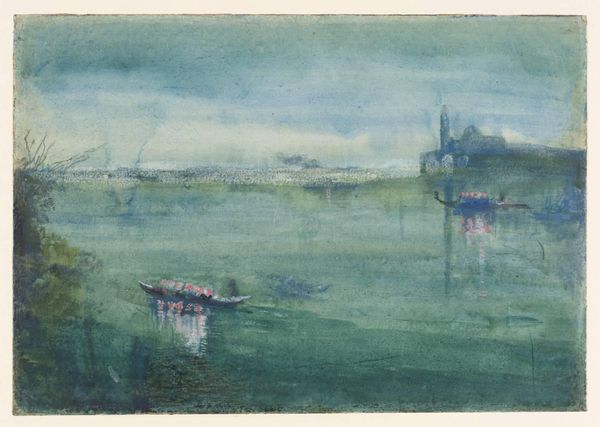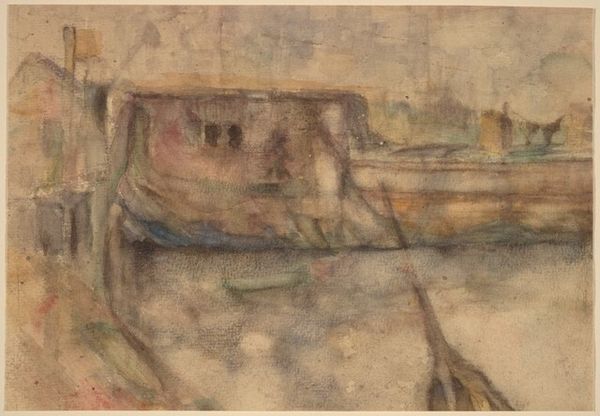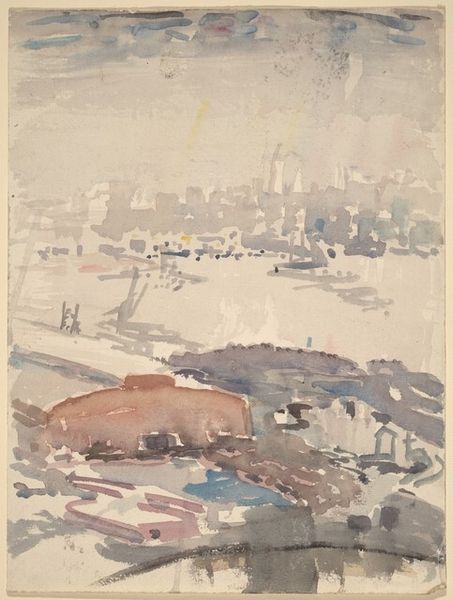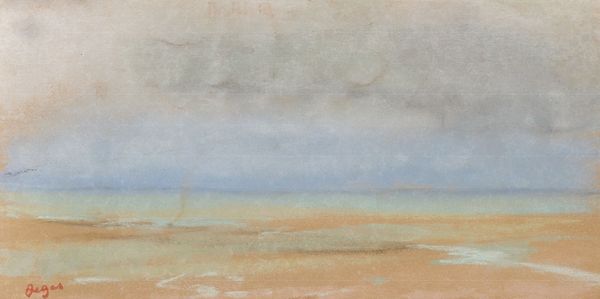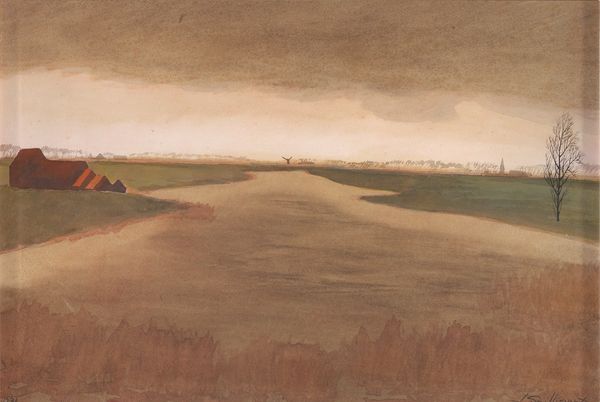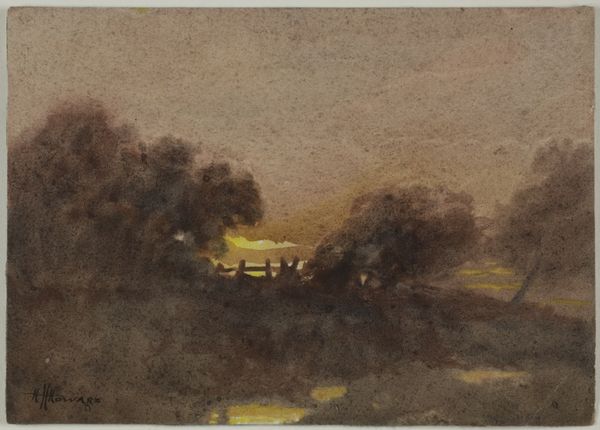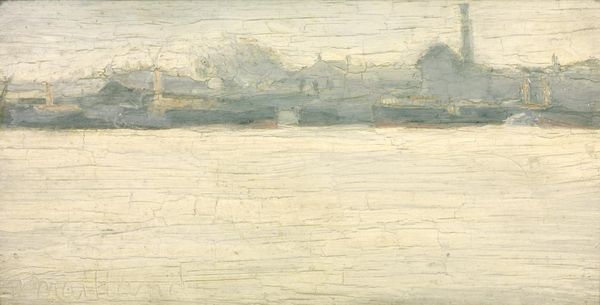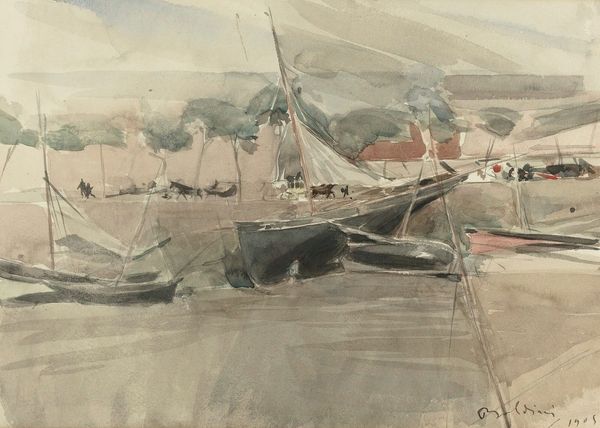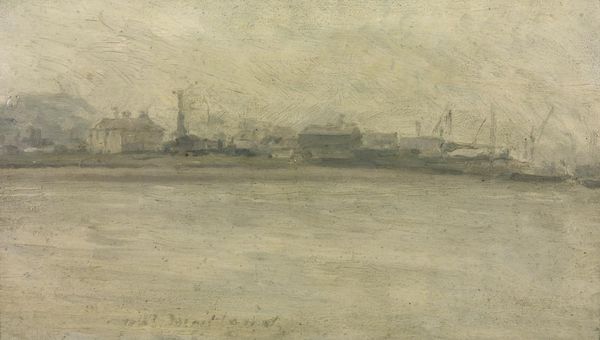
painting, watercolor
#
painting
#
impressionism
#
landscape
#
watercolor
#
modernism
#
watercolor
Copyright: Public Domain: Artvee
Editor: This is Whistler’s "London Bridge," created in 1881 with watercolor. The color palette is muted, almost monochromatic, giving the scene a very somber, atmospheric quality. How do you interpret this work from a formal perspective? Curator: Immediately striking is Whistler's sophisticated use of tonal values. Observe how he builds depth and spatial recession not through sharp lines or delineated forms, but through subtle gradations of pigment. Consider the overall composition: a series of horizontal bands subtly interrupted by vertical elements like the bridge supports and the plume of smoke. The emphasis is not on representational accuracy but on an exploration of abstract forms. How does this conscious flattening of perspective contribute to the mood of the piece? Editor: It almost feels like he's prioritizing the surface of the paper itself, making it as important as the image depicted. Do you think there's a sense of modernity in this approach? Curator: Precisely. This echoes the tenets of modernism by emphasizing the artwork's materiality. By deliberately eschewing traditional perspectival techniques, Whistler draws attention to the act of painting itself, making us consider the interplay of color, texture, and form on a two-dimensional plane. Look at the fluidity of the watercolor; do you think the transparency heightens the ephemeral nature of the depicted scene? Editor: I do see it. The way he handled the medium brings a certain lightness to an otherwise heavy, industrial scene. Thank you, I now have a much clearer view of the way Whistler broke down conventions to create something completely innovative. Curator: It's rewarding to observe how, by deconstructing the expected visual language, Whistler compels us to re-evaluate our own perception.
Comments
No comments
Be the first to comment and join the conversation on the ultimate creative platform.
